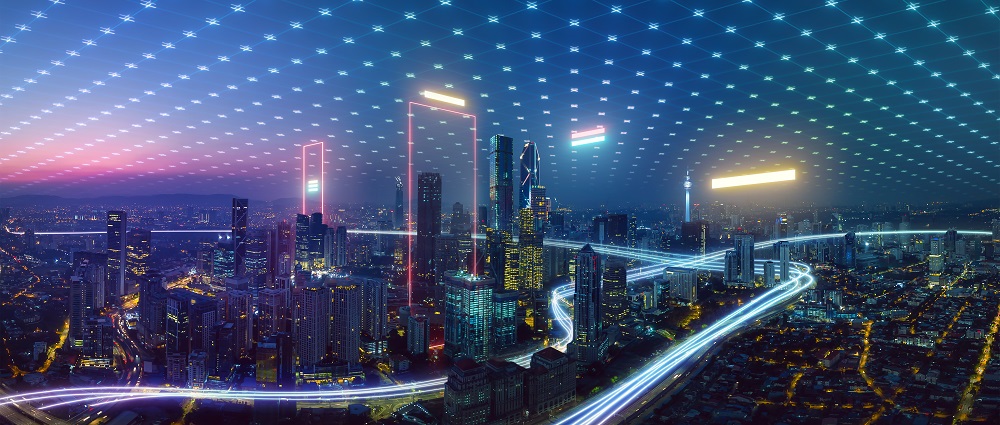
While cities only cover 2% of the Earth’s surface, they account for 50% of its population, 75% of its energy consumption, and 80% of its carbon emissions.
Today, across the globe, many of these cities are implementing sustainability strategies with the goal of reducing their carbon footprint, optimising water and energy usage, and protecting the well-being of their residents.
Smart cities, however, are implementing these strategies using technology such as IoT, 5G, and AI that provide hardware, connectivity, and data analysis capabilities to collectively underpin their infrastructures. With environmental issues being more important than ever – and commercial real estate consuming 53% of the world’s electricity consumption, which will grow to over 80% by 2040 – this technology is being used to solve energy inefficiency, implement sustainability strategies, and increase the use of green building materials.
Making cities sustainable
The Sustainable Development Goals or Global Goals are a collection of 17 interlinked objectives, which were agreed to by world leaders in 2015. Objective 11 is to create sustainable cities and communities, which includes ten targets: providing safe and affordable housing and sustainable transport, inclusive urbanisation, protecting cultural and natural heritage, reducing adverse effects of natural disasters, reducing environmental impact, providing safe green spaces, supporting least-developed countries, and implementing policies for inclusion, resource efficiency, and disaster risk reduction.
A sustainable city will need to take all of these factors into account, implementing technology that enables accessible public transport and electric vehicles, as well as green architecture that not only reduces the environmental impact of construction but also optimises energy consumption whilst in operation.
Green architecture
Green architecture is a philosophy that embraces technology to create more sustainable ways for us to live on this planet. Most people spend their time indoors, and residential and commercial buildings account for a significant amount of global energy consumption, so green architecture aims to not only reduce the environmental impact of buildings, but also ensure that people are happy, healthy, and safe.
Reducing energy consumption
A building breaking ground today has the potential to use a fraction of the energy compared to its counterparts only a decade ago. Leadership in Energy Efficient Design (LEED) has played a major part in this by laying out building standards that certify that buildings meet a certain level of performance. Buildings that achieve LEED certifications have tax incentives, and there are lower maintenance costs associated with buildings that meet these standards.
A key priority for building owners when constructing or redeveloping their buildings is finding a partner that understands and can provide for the criteria. eyrise, part of Merck group, offers two solutions that revolutionise the way that switchable glass is manufactured, as well as improve the environment it creates inside the building. Across the globe, it has helped buildings to gain green building certification and meet LEED standards, but how much of an impact does glass choice make?
eyrise s350 allows users to control how much light and heat passes through the glass on-demand or via a building management system, while eyrise i350 allows users to instantly switch between full transparency to privacy glass. eyrise glass does not require maintenance beyond normal cleaning duties, and as a long-lasting solution, it is more environmentally friendly than its competition. A major key sustainability selling point for eyrise 350 is that it can reduce lighting and temperature control costs for indoor spaces, and by developing dynamic switchable glass using liquid crystals, eyrise uses a minimum amount of material compared to alternatives such as a blinds system.
Promoting well-being in indoor environments
Controlling the amount of solar radiation that enters the building not only reduces the need for cooling and heating systems, but it can also impact the wellbeing of people inside. The effects of exposure to natural light in the workplace on the health and productivity of office workers, a review published by JBI, states that “there are a number of benefits of exposure to natural light. As well as its necessity for Vitamin D synthesis, daylight also plays a critical role in maintaining circadian rhythm”. Additionally, “admitting daylight to the work area may increase worker satisfaction and productivity while slashing energy costs.”
eyrise solar shading glass enables buildings to let in natural light, allowing people inside to better connect with the outside world. This makes for happier, healthier, and more productive residents and workers, with the added benefit of lower energy expenditure.
For more information about eyrise s350 technology, download the whitepaper below.

